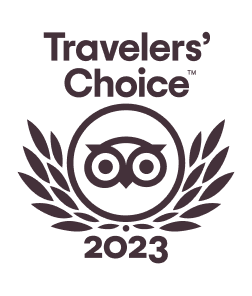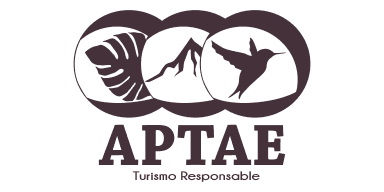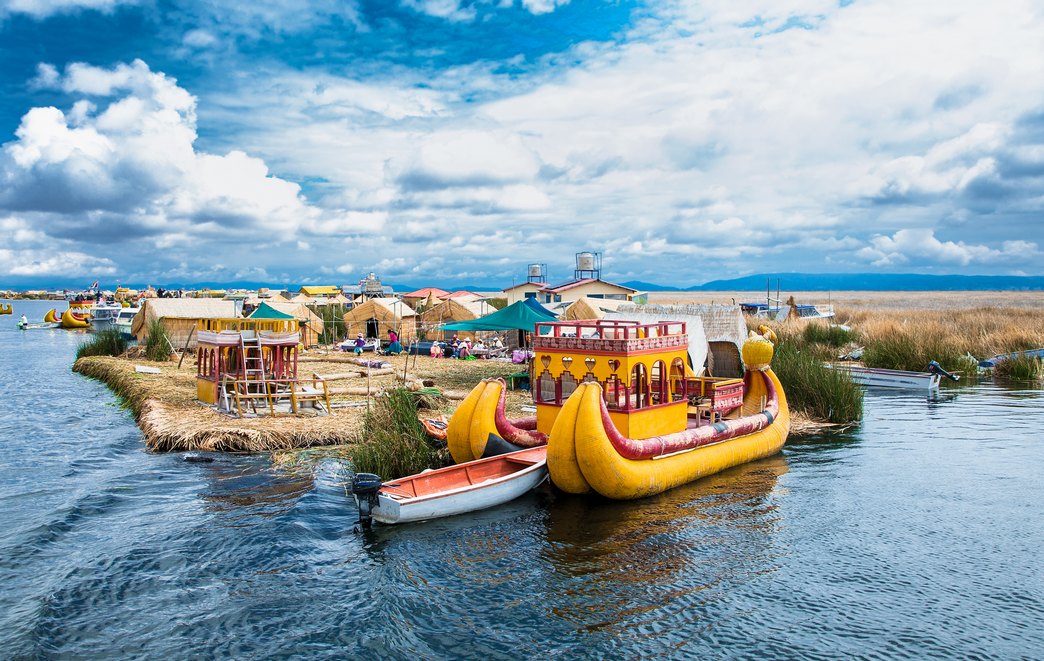
Lake Titicaca shares borders with Peru and Bolivia, and is the largest lake in South America and the highest navigable lake in the world. Despite its undeniable beauty and serenity, the floating islands of Uros are by far the most remarkable attribute to the lake.
The islands are not natural-wonders, it is the people who live there that have been building and maintaining these islands for thousands of years. This pre-Inca community is called “Uros” and they are indigenous people from Peru and Bolivia.
Visiting the flouting islands of Uros is an incredible experience that can only be fully embodied first hand. The pride of the people and how they have been able to protect their local customs is absolutely beautiful to witness. And by visiting the floating islands of Uros, you will be supporting them too. Here are 5 things to know before visiting the Floating Islands of Uros.
1. How to get there
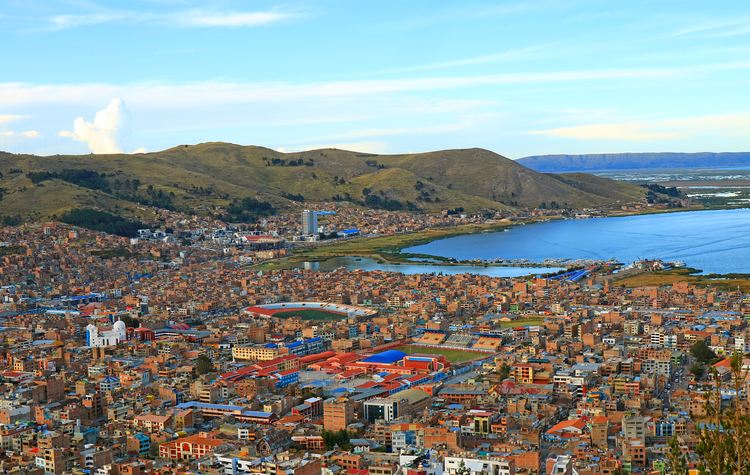
Lake Titicaca can be reached via airplane from Lima. The main city on Lake Titicaca is Puno, which is also the pitstop for all travelers planning on embarking this water wonderland.
The flight from Lima to Puno takes around 2 hours and after that you have to complete the journey on land. In order to reach the Uros Islands, it is necessary to embark in the port of Puno. It takes approximately 30 minutes to arrive on the islands from the port.
2. The Uros People
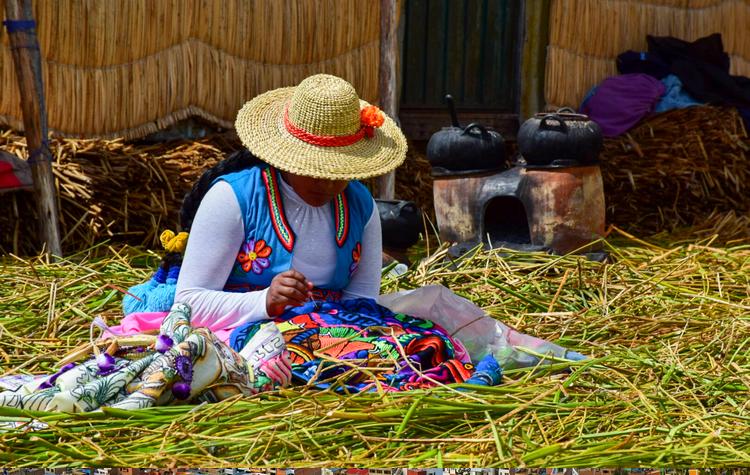
The people who built these magnificent islands on Lake Titicaca have been doing so for thousands of years. They are indigenous people who migrated to the lake because of the political uncertainty, especially when the Incas arrived, the Uros built a floating city with the intention to protect themselves from their enemies.
The Uros that still live here have been able to preserve their local customs, and through their pride in their culture, they pass it on towards their younger generations. They are very skillful fisherman, and incredible weavers through their practice of creating almost everything from Totora reeds. Just the islands that they live on are made out of 3-meter-thick reeds, and the houses they built that rest on top of them too.
Nowadays the Uros have implemented some modern structures that compliment their rural lifestyle, thanks to the influx of tourism every year. Even though they have maintained their culture and lifestyle over the centuries, the Uros have adapted to using solar energy to provide them lighting and electricity. In the past they would make use of special methods to cook without fire hazards, like cooking on top of rocks, but nowadays they make use of ovens in their homes which are safer and convenient.
Either way, the Uros serve as a great example of endurance, pride of a culture and the possibility to live in harmony and cohesive balance with nature. The Uros greatly appreciate visits to their islands as the financial support helps them to keep their heritage alive.
3. Interesting Facts
The pure fact that these islands are man-made, and have been floating on the waters of Lake Titicaca for thousands of years, is by itself an amazing fact. Regardless, there are some other super interesting things to know before travelling to Puno to embark on this fantastic journey.
Everything has the same source: Totora reeds
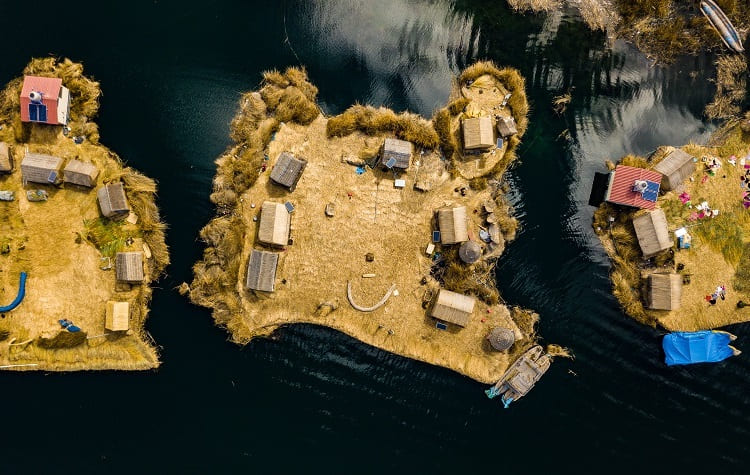
In order to make and maintain these phenomenal islands, workerseed to collect totora reed that comes from the lake, and weave them together to make thick layers. This is some dedicated work taking into consideration that each island is about 3 meters thick. It is not only the islands themselves that are constructed this way, but the houses, baskets that are used in the kitchen, and of course the souvenir gifts that are sold to tourists.
The Uros still eat from the lake
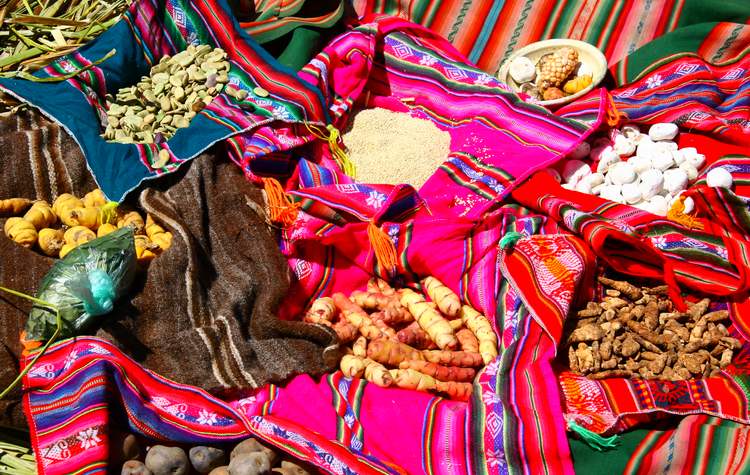
The Uros take pride in their traditional hunter-gatherer techniques in order to provide food for their families. Even with the rise in tourism, which is a great support to the people and helps to keep their culture alive, they have stayed committed to their food culture. Catfish and trout are caught from the lake, and they make use of domesticated birds to raise for laying eggs. They also use the white lower section of the totora reed, which is edible, and provides nourishment and medicinal benefits.
Tourism saved the Uros
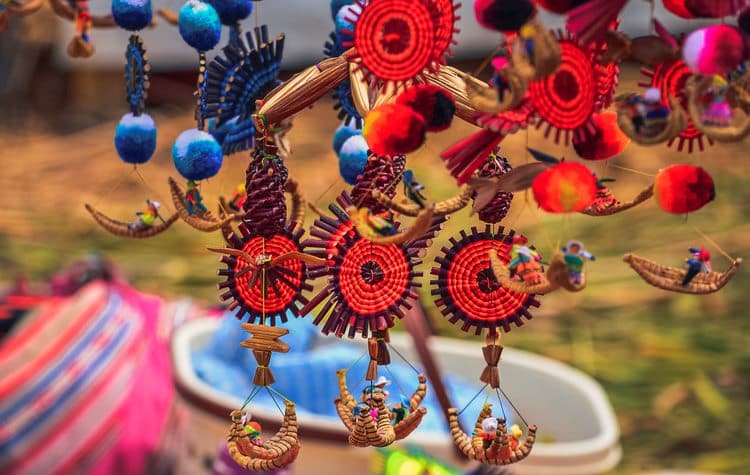
Due to the fast-paced society we are living in, and the speed of technological development, the Uros would not have been able to maintain their primitive life-style and cultural traditions if not for tourism. When visiting the islands, the locals will inevitably try to sell their local handicrafts, and this is a wonderful opportunity to support and empower their community.
4. Important to know before
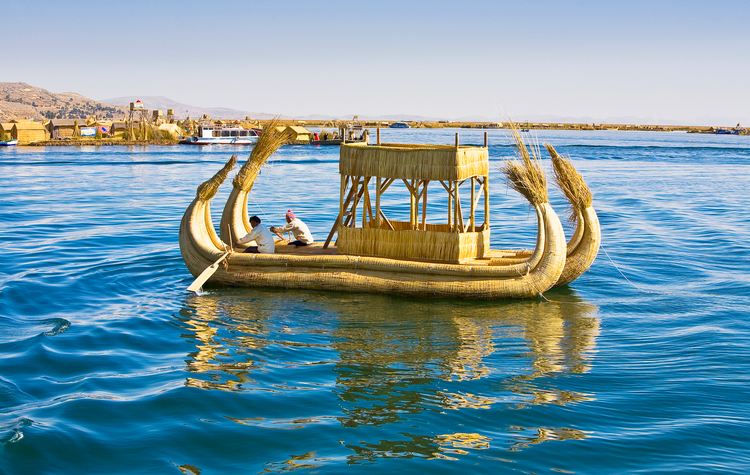
The weather at Lake Titicaca is usually very cold most of the year, in the day and at night. It is important to bring a warm jacket, and a raincoat. Since Lake Titicaca is located at an altitude of approximately 4,000 meters above the sea level, it is essential to prepare yourself physically during the days prior to your trip so that you do not suffer from altitude sickness.
There are no food stores on the islands, so you should bring some water and snacks with you. For the same reason, it is good to bring personal hygiene items as well. Also, remember to bring extra batteries for your photo and video camera.
5. How to visit with Kuoda
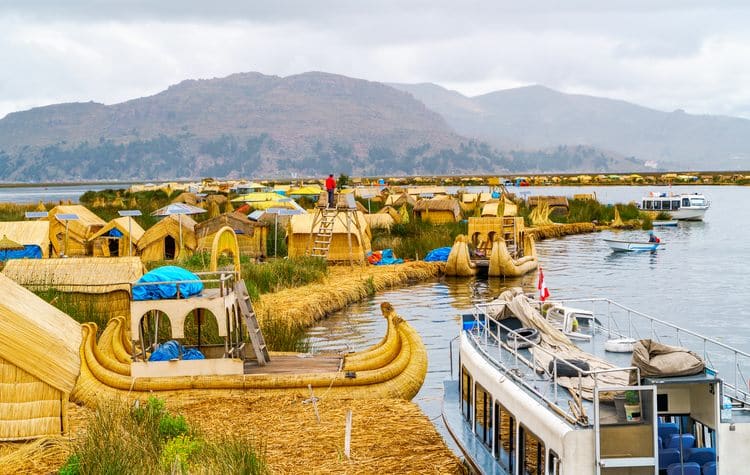
A visit to the Uros and their homes on the floating islands on Lake Titicaca is an experience that can only be truly felt by doing it yourself. Lake Titicaca provides that tranquility that cannot be expressed into words, and the hospitality and warming welcome from the people is something not to miss when travelling to Peru. It can be quite overwhelming to organize a trip like this, especially with so much contradicting information on the internet nowadays. We at Kuoda specialize in custom-made trips in South America, and we take into consideration the specific needs and requirement of every client. Get in contact with us today, and talk to one of our trip designers to start planning your trip as soon as possible.
Peru’s Northern Beaches Travel Guide: Your Adventure-Filled Getaway
Bask in the northern BEACHERGOER’S PARADISE, With its dependable year-round sunshine, pristine coastline, s...
Read PostThe Most Eco-Friendly Hotels in South America For The Responsible Traveler
For the eco friendly hotels in South America, responsible travel in hospitality is not just a trend but a nece...
Read PostExplore Peru’s Sacred Valley: A Journey Through Incan Wonders
Experience a land BLESSED BY INCAS, Tucked away in the Andean foothills of Peru lies the historic Sacred Vall...
Read Post

 Call
Call 














